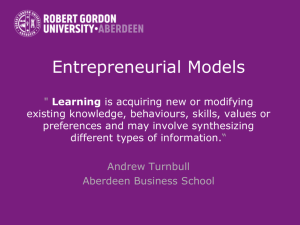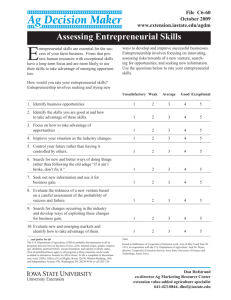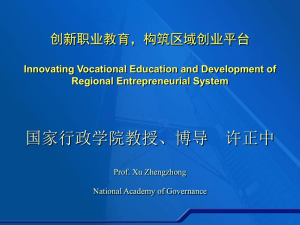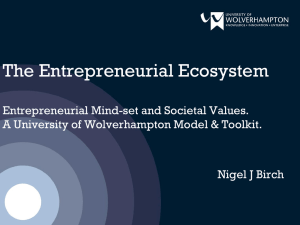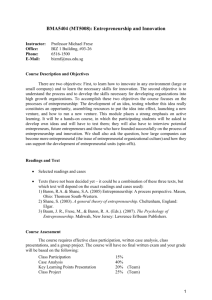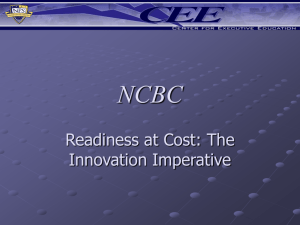Social Enterprises – Spring 2015 Homework #1 (Ch 1 – 2) Answer
advertisement
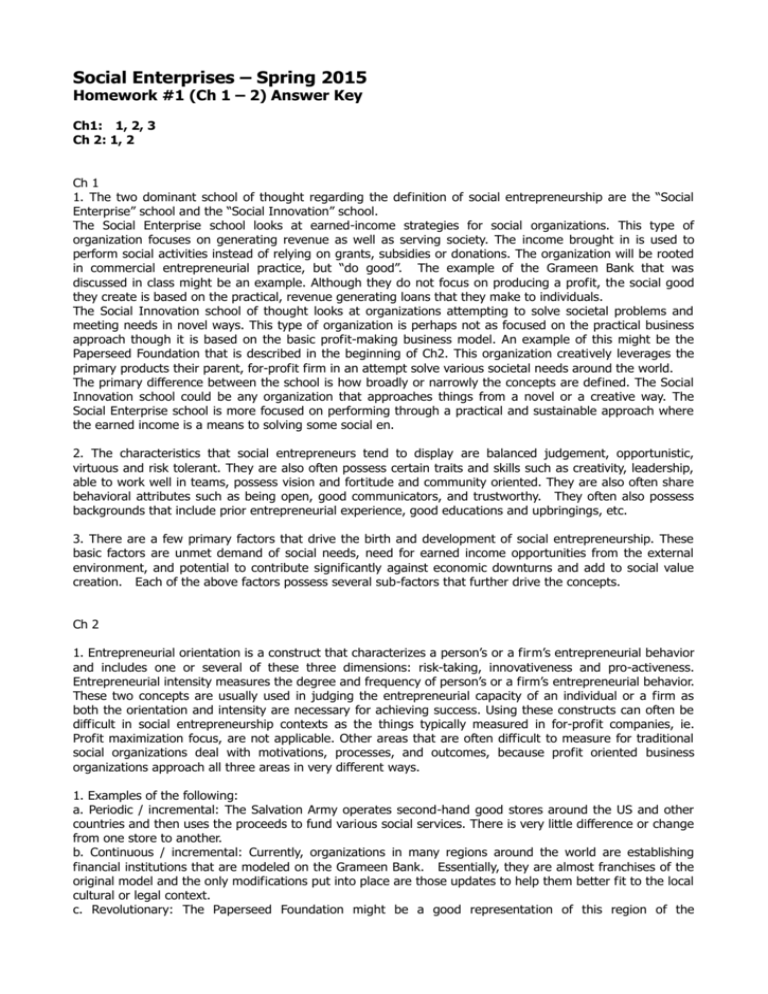
Social Enterprises – Spring 2015 Homework #1 (Ch 1 – 2) Answer Key Ch1: 1, 2, 3 Ch 2: 1, 2 Ch 1 1. The two dominant school of thought regarding the definition of social entrepreneurship are the “Social Enterprise” school and the “Social Innovation” school. The Social Enterprise school looks at earned-income strategies for social organizations. This type of organization focuses on generating revenue as well as serving society. The income brought in is used to perform social activities instead of relying on grants, subsidies or donations. The organization will be rooted in commercial entrepreneurial practice, but “do good”. The example of the Grameen Bank that was discussed in class might be an example. Although they do not focus on producing a profit, the social good they create is based on the practical, revenue generating loans that they make to individuals. The Social Innovation school of thought looks at organizations attempting to solve societal problems and meeting needs in novel ways. This type of organization is perhaps not as focused on the practical business approach though it is based on the basic profit-making business model. An example of this might be the Paperseed Foundation that is described in the beginning of Ch2. This organization creatively leverages the primary products their parent, for-profit firm in an attempt solve various societal needs around the world. The primary difference between the school is how broadly or narrowly the concepts are defined. The Social Innovation school could be any organization that approaches things from a novel or a creative way. The Social Enterprise school is more focused on performing through a practical and sustainable approach where the earned income is a means to solving some social en. 2. The characteristics that social entrepreneurs tend to display are balanced judgement, opportunistic, virtuous and risk tolerant. They are also often possess certain traits and skills such as creativity, leadership, able to work well in teams, possess vision and fortitude and community oriented. They are also often share behavioral attributes such as being open, good communicators, and trustworthy. They often also possess backgrounds that include prior entrepreneurial experience, good educations and upbringings, etc. 3. There are a few primary factors that drive the birth and development of social entrepreneurship. These basic factors are unmet demand of social needs, need for earned income opportunities from the external environment, and potential to contribute significantly against economic downturns and add to social value creation. Each of the above factors possess several sub-factors that further drive the concepts. Ch 2 1. Entrepreneurial orientation is a construct that characterizes a person’s or a firm’s entrepreneurial behavior and includes one or several of these three dimensions: risk-taking, innovativeness and pro-activeness. Entrepreneurial intensity measures the degree and frequency of person’s or a firm’s entrepreneurial behavior. These two concepts are usually used in judging the entrepreneurial capacity of an individual or a firm as both the orientation and intensity are necessary for achieving success. Using these constructs can often be difficult in social entrepreneurship contexts as the things typically measured in for-profit companies, ie. Profit maximization focus, are not applicable. Other areas that are often difficult to measure for traditional social organizations deal with motivations, processes, and outcomes, because profit oriented business organizations approach all three areas in very different ways. 1. Examples of the following: a. Periodic / incremental: The Salvation Army operates second-hand good stores around the US and other countries and then uses the proceeds to fund various social services. There is very little difference or change from one store to another. b. Continuous / incremental: Currently, organizations in many regions around the world are establishing financial institutions that are modeled on the Grameen Bank. Essentially, they are almost franchises of the original model and the only modifications put into place are those updates to help them better fit to the local cultural or legal context. c. Revolutionary: The Paperseed Foundation might be a good representation of this region of the entrepreneurial grid. They display great and highly varied changes to their social service offerings in the various countries depending upon local needs. For example, in one region, Paperseed created playgrounds whereas in other regions, they supplied paper products. To achieve these different offerings, their organization shows a great deal of flexibility and ability to adapt to new innovation risk taking and proactiveness levels.

